Multipole Simulation
This case explains how to calculate far-field, radiation pattern, current density, charge density and save a multipole file. Then use the multipole file to calculate the near field not calculated in the first simulation.
Step 1: Create a new MOM Project.
Open newFASANT and select 'File --> New' option.
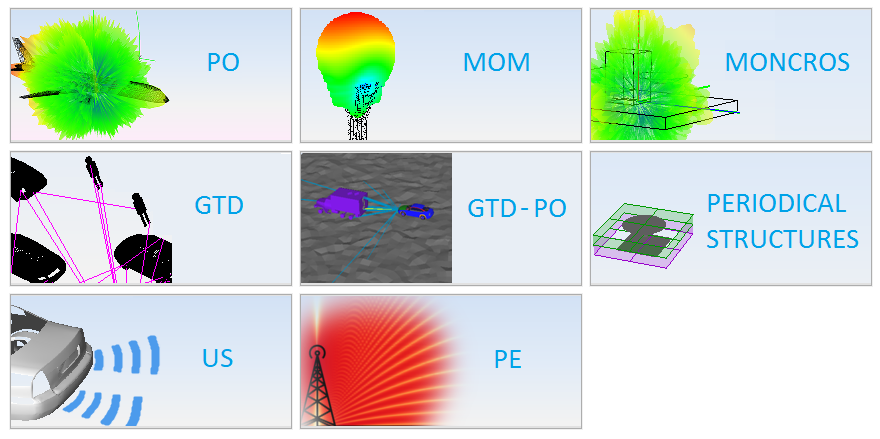
Figure 1. New Project panel
Select 'MOM' option on the previous figure and start to configure the project.
Step 2: Create the geometry model. To obtain more information about geometries generation see Parameters.
Execute 'box' command writing it on the command line and sets the parameters as the next figure shows when command line ask for it.

Figure 2. Box parameters
Select box geometry on the main panel and execute 'explode' command writing it on the command line. Then the box will be transformed into 6 surfaces.
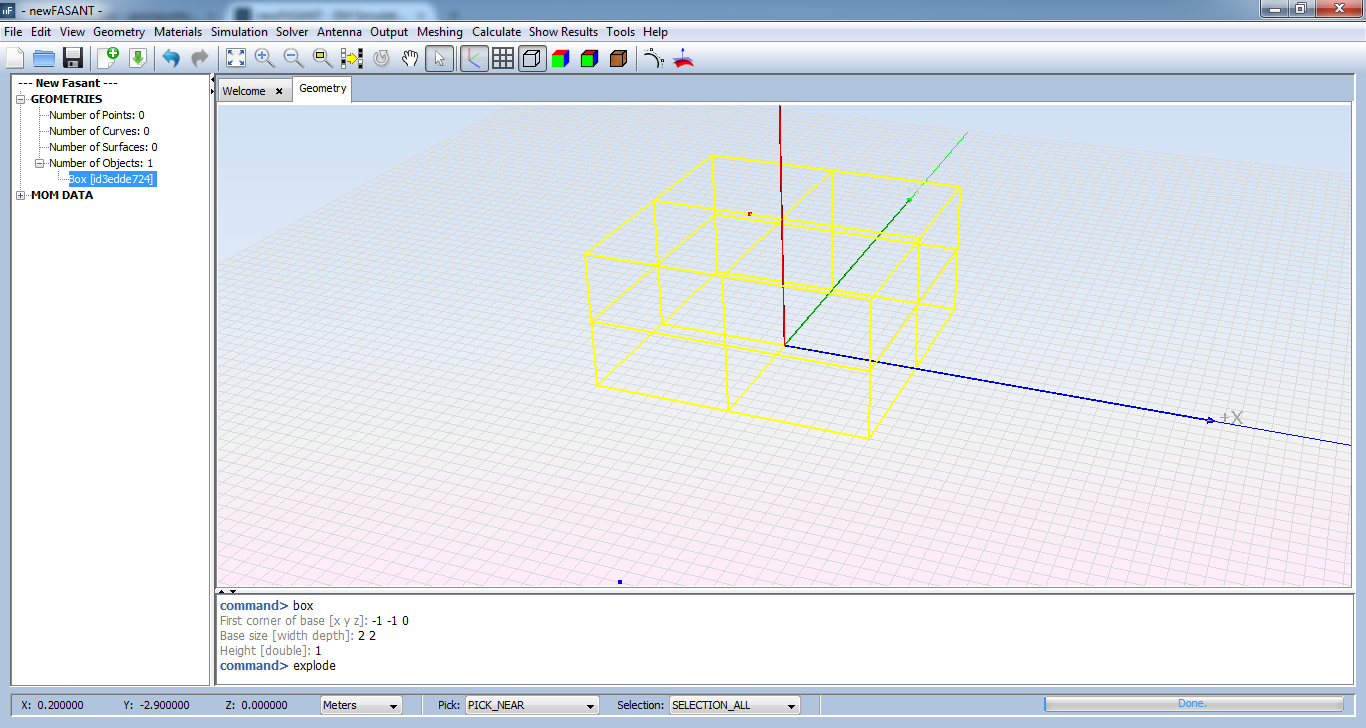
Figure 3. Box selection and 'explode' command
Select the top surface and execute 'delete' command. Then the surface will be removed from the geometry.

Figure 4. Surface selection and 'delete' command
Select all remaining surfaces and execute 'group' command.

Figure 5. Surfaces selection and 'group' command
Step 3: Set Simulation Parameters
Select 'Simulation --> Parameters' option on the menu bar and the following panel appears. Set the parameters as the next figure shows and save it.

Figure 6. Simulation Parameters panel
Step 4: Set the source parameters. To obtain more information about sources and antennas see Antennas.
Select 'Antenna --> Dipole --> Dipole Antenna' option and set the parameters as show the next figure. Then save the parameters and the dipole appears.

Figure 7. Dipole Antenna panel
Step 5: Meshing the geometry model.
Select 'Meshing --> Parameters' to open the meshing configuration panel and then set the parameters as show the next figure. In order to obtain the shortest possible time for meshing,it is recommended to run the process of meshing with the number of physical processors available to the machine.

Figure 8. Meshing panel
Then click on 'Mesh' button to starting the meshing. A panel appears to display meshing process information.
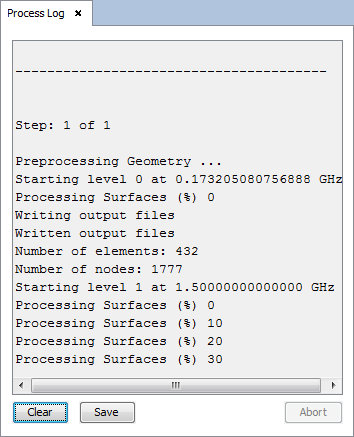
Figure 9. Meshing process log
Step 6: Execute the simulation. In order to obtain the shortest possible time for calculating the results,it is recommended to run the process with the number of physical processors available to the machine.
Select 'Calculate --> Execute' option to open simulation parameters. Then select the number of processors as the next figure show.
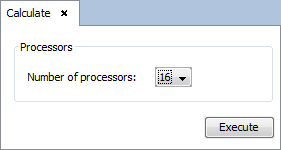
Figure 10. Execute panel
Then click on 'Execute' button to starting the simulation. A panel appears to display execute process information.
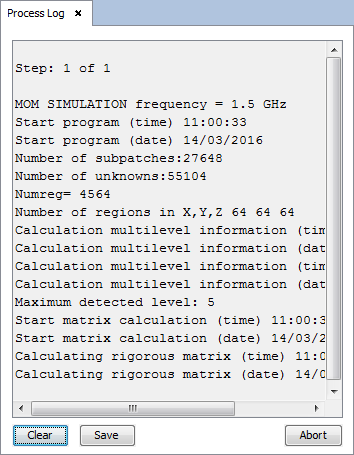
Figure 11. Execute process log
Step 7: Show Results. To get more information about the graphics panel advanced options (clicking on right button of the mouse over the panel) see Annex 1: Graphics Advanced Options.
Select 'Show Results --> Far Field --> View Cuts' option to show the cuts of the observation directions options.
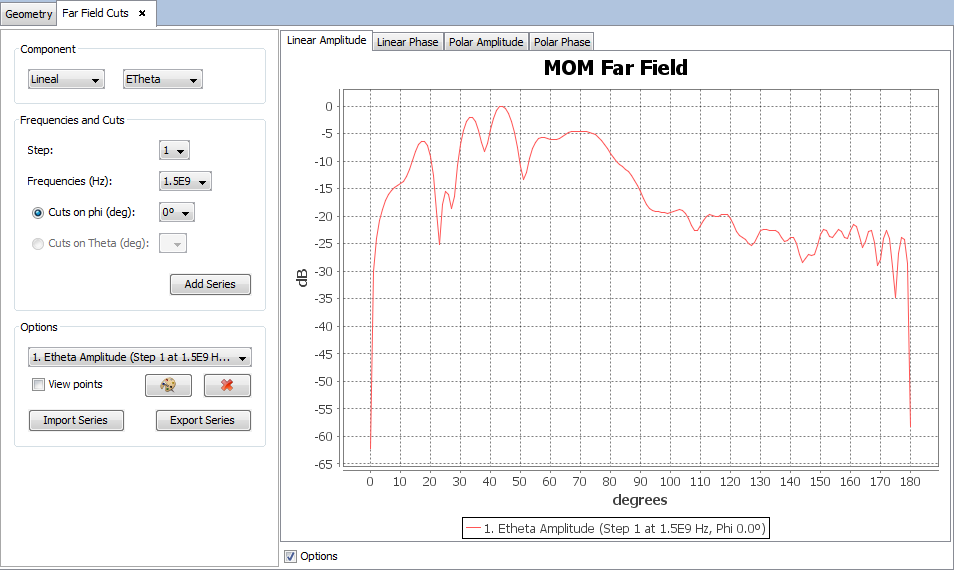
Figure 12. Far Field cuts
Selecting other values for the component, step, frequency or cut parameters and clicking on 'Add Series' button a new cut will be added to the selected parameters. On 'Show Results --> Far Field' menu, other results are present such as 'View Cuts by Step' and 'View Cuts by Frequency' and this option display the values for one selected point for each step or frequency.
Select 'Show Results --> Radiation Pattern --> View Cuts' option to show the cuts of the radiation pattern options.
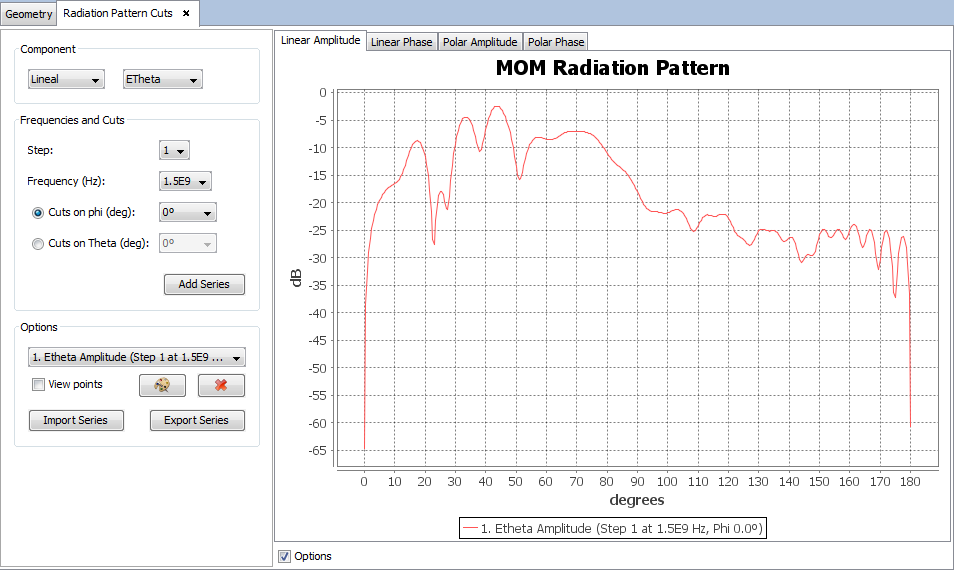
Figure 13. Radiation Pattern cuts
Selecting other values for the component, step, frequency or cut parameters and clicking on 'Add Series' button a new cut will be added to the selected parameters. On 'Show Results --> Radiation Pattern' menu, other results are present such as 'View Cuts by Step' and 'View Cuts by Frequency' and this option display the values for one selected point for each step or frequency.
Select 'Show Results --> Radiation Pattern --> View 3D Pattern' option to show the cuts of the radiation pattern options.

Figure 14. Radiation Pattern 3D
Changing values for step, frequency, component or filtering parameters the visualization for the new parameters will be shown.
Select 'Show Results --> View Currents' option to show the current density.
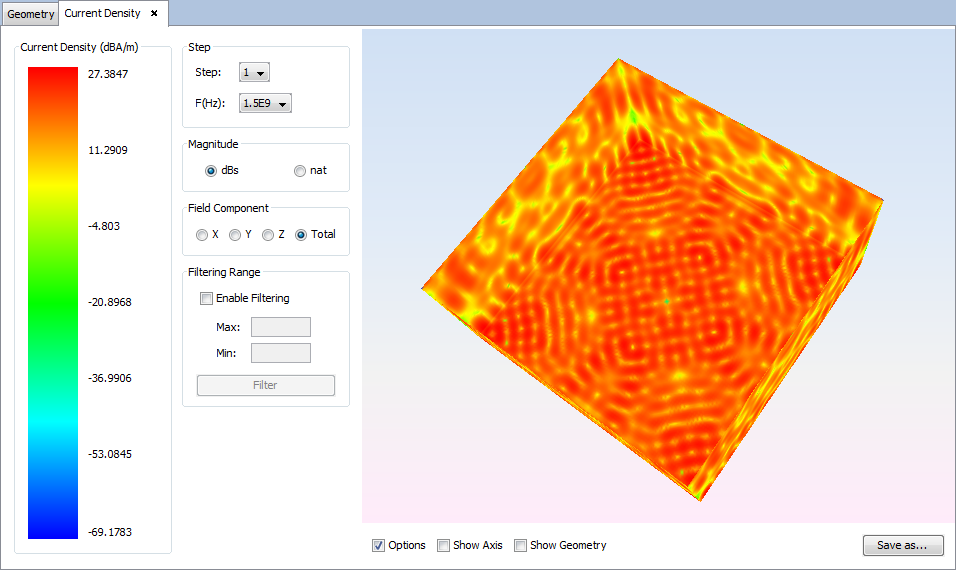
Figure 15. Current Density
Changing values for step, frequency, magnitude, component or filtering parameters the visualization for the new parameters will be shown.
Select 'Show Results --> View Charges' option to show the charge density.
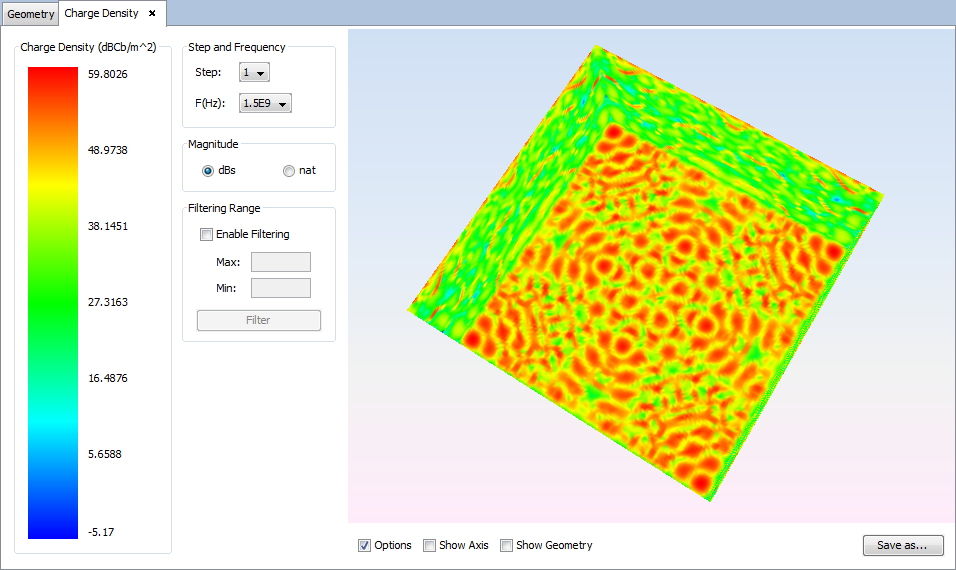
Figure 16. Charge Density
Changing values for step, frequency, magnitude or filtering parameters the visualization for the new parameters will be shown.
Select 'Show Results --> Export Multipole File' option to save the multipole file on a selected path for use in other simulations. Previous, select the step and frequency for the multipole file.

Figure 17. Export Multipole
Step 8: Delete the geometry model and the dipole antenna and set the multipole file saved as an antenna. To obtain more information about sources and antennas see Antennas.
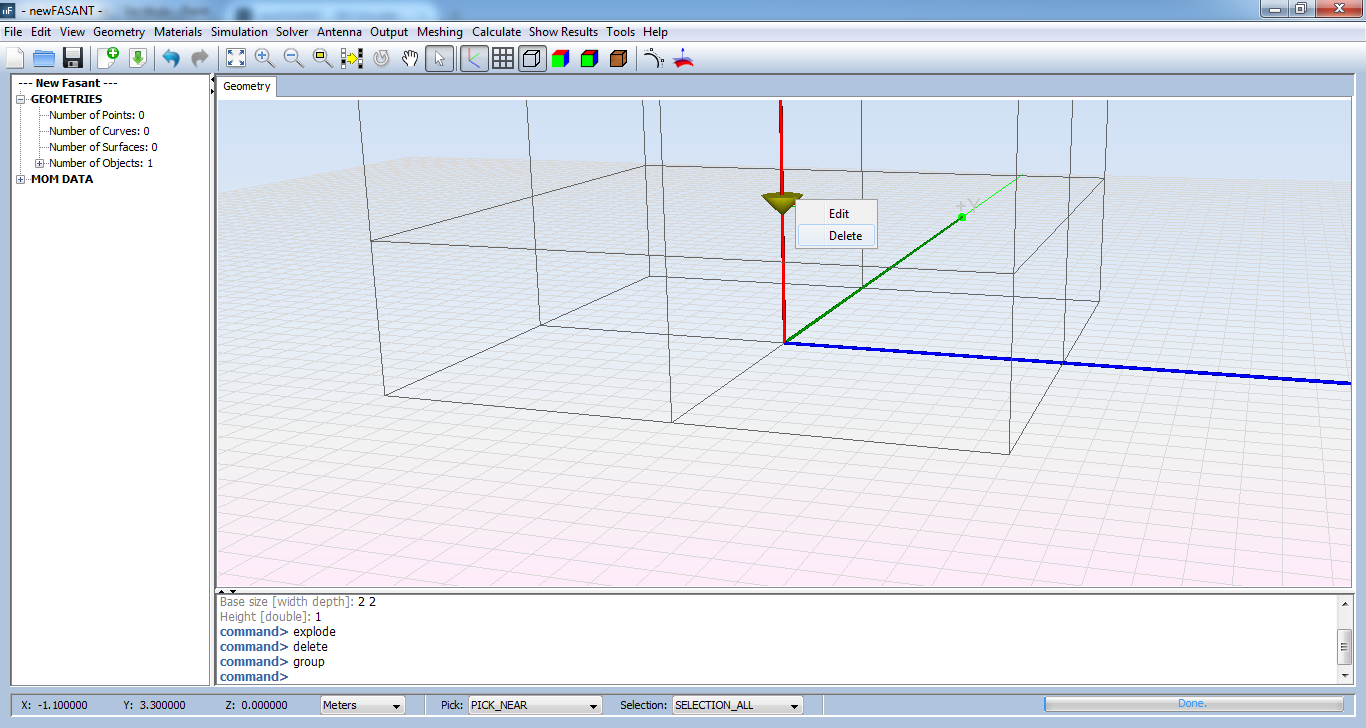
Figure 18. Delete Antenna
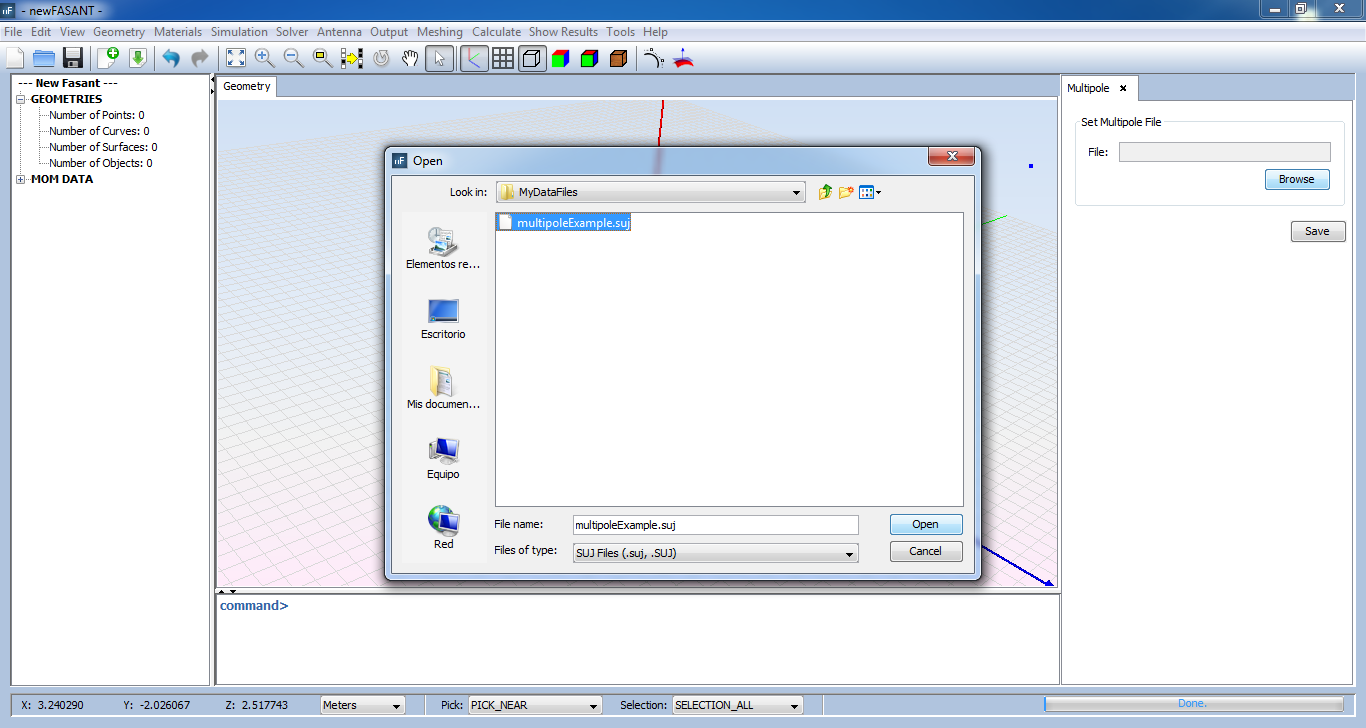
Figure 19. Import Multipole File as Antenna
Step 9: Set Near Field parameters.
Select 'Output --> Observation Points' option. The following panel will appear.

Figure 20. Observation Points panel
To add a line visualization, select 'line' on the selector of 'Geometry Types' section and click on 'Add' button. The line parameters panel will appear, then configure the values as the next figure show and accept it clicking on 'OK' button.

Figure 21. Observation Line panel
The observation line will appear as a dashed line on the position configured.

Figure 22. Observation Line visualization
Step 10: Meshing and Execute as in steps 5 and 6.
Step 11: Show Results again to ensure that results are similar to the original simulation.